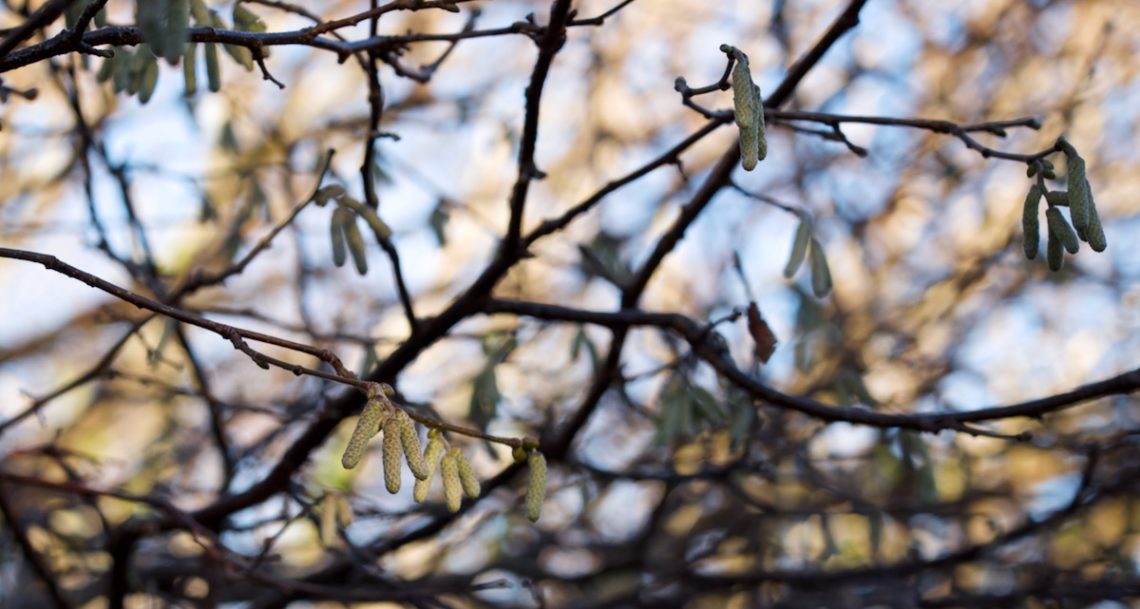
Looking for catkins at Ballachuan
Friday was the last day in a spell of clear, frosty weather – perfect for a visit to Ballachuan hazel wood on the island of Seil. Historically and ecologically, this wood is a very special place. NatureScot explains:
“Atlantic hazel occurs in the oceanic climatic areas of the western British Isles. It is found widely along Britain and Ireland’s west coasts. But the hazel only develops into Atlantic hazelwood, a habitat of high biodiversity, in very few places… Our ancient and species-rich Atlantic hazelwoods are among Scotland’s oldest woodlands. They are older by far than our Atlantic oakwoods and even some of our Caledonian pinewoods. Hazel was one of the first woody species to establish in the west as the ice retreated about 11,000 years ago.”
Although we’ve been to Ballachuan in every season, I’ve never been there at catkin-time, and I wanted to see what it looked like with the catkins out. A dry day, with the ground still hard with frost, seemed like an ideal opportunity.
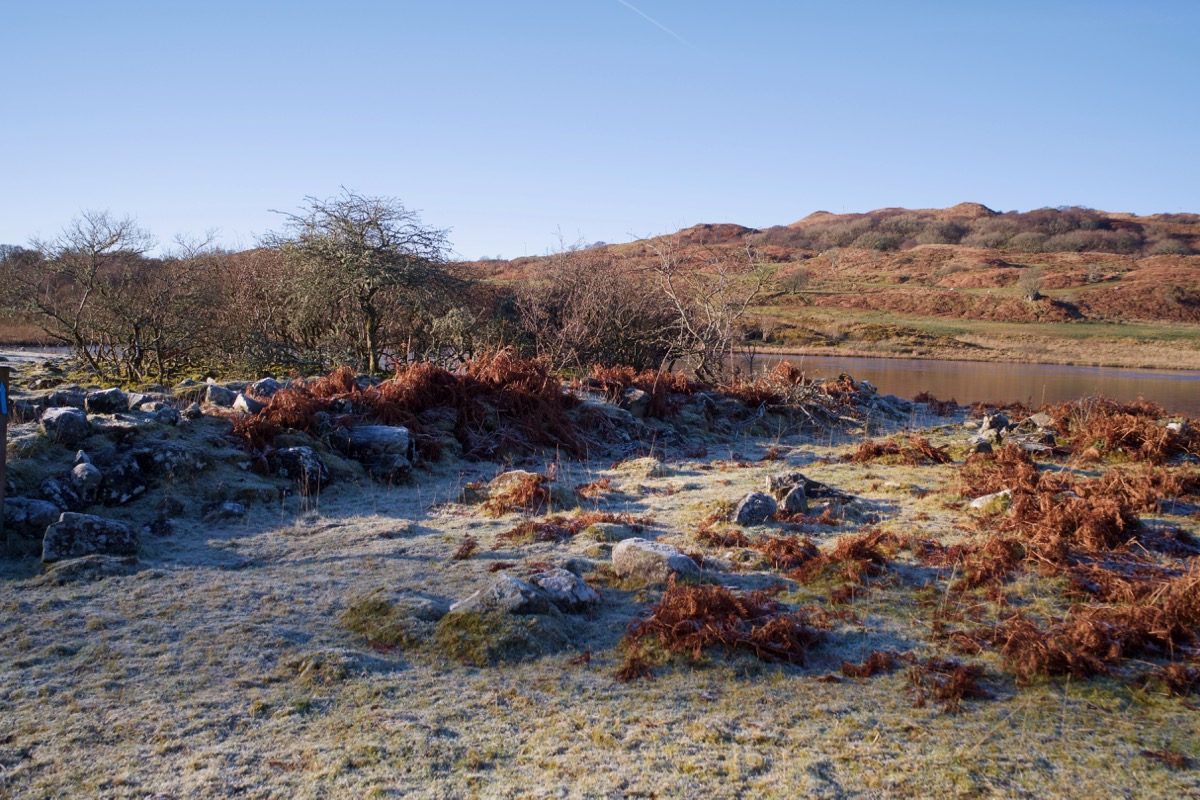
Ballachuan Loch was partly frozen, and some bored-looking gulls were standing on the ice, watching a party of mallards and a swan feeding in open water. We climbed over the stiles, crossed the sheep field and followed the path into the wood at its north-western end.
I was half-expecting to be walking through a profusion of catkins, but to my surprise I saw none at all. In the dim light, the trees were damp, mossy, silent – and bare. Then I looked directly up, through the latticed canopy, to the topmost branches. All the catkins were hanging high above our heads, bathed in sunlight! Of course, that’s where they would appear, on the outermost branches that are exposed to the weather, so that the wind can shake the pollen from the male catkins and transport it to the female flowers.
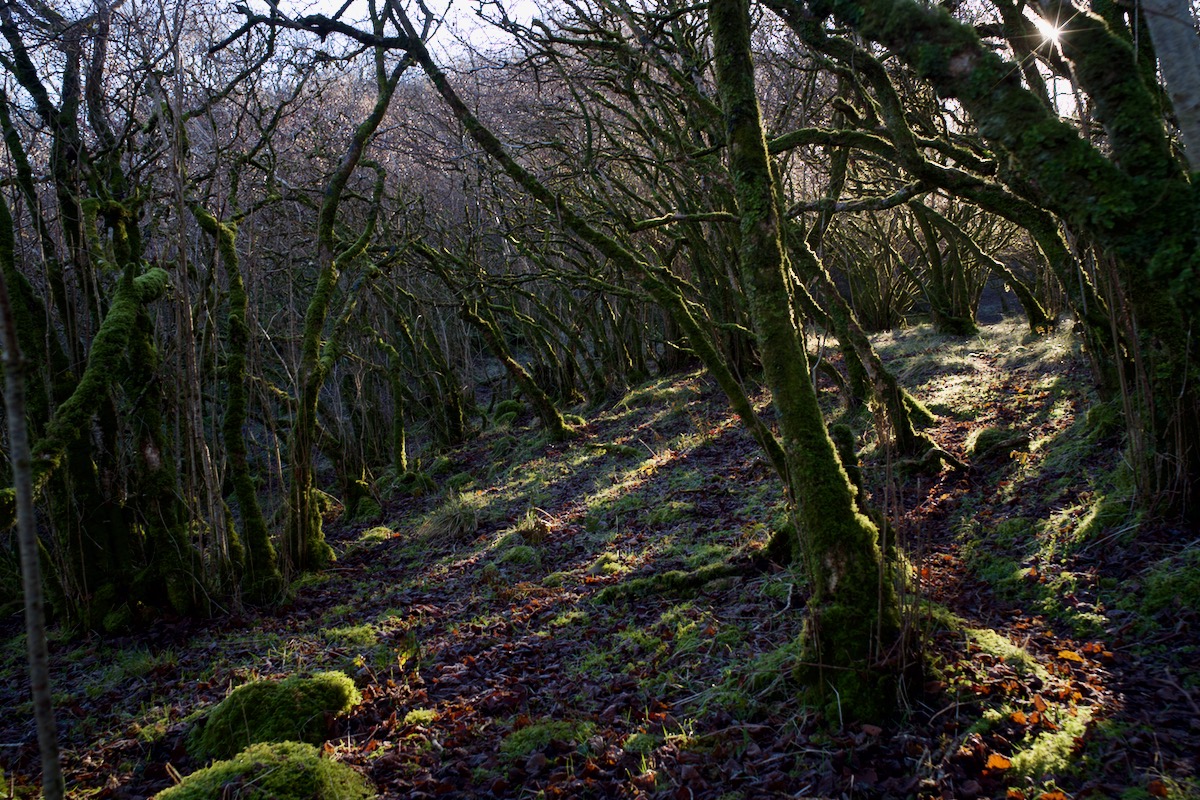
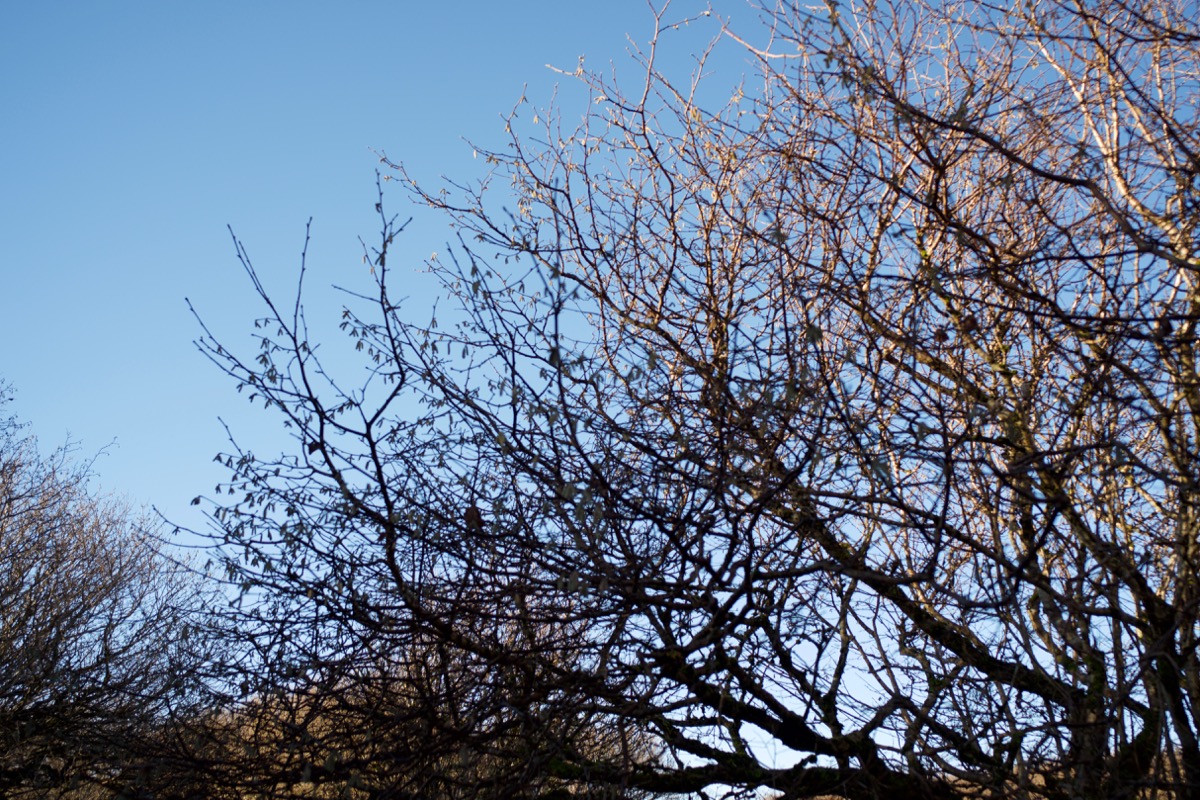
Roughly in the centre of the wood are some clearings where the trees give way to open patches of hill. Here, on the south-facing fringes, the catkins were lower down on the trees and more accessible. Most, we noticed, were still tightly held, although one or two were loosening up and showing the tips of their tiny greenish-yellow flowers. I get the feeling that they will all come out together. Another week, or maybe more, and the wood will be a sea of dancing lambs’ tails.
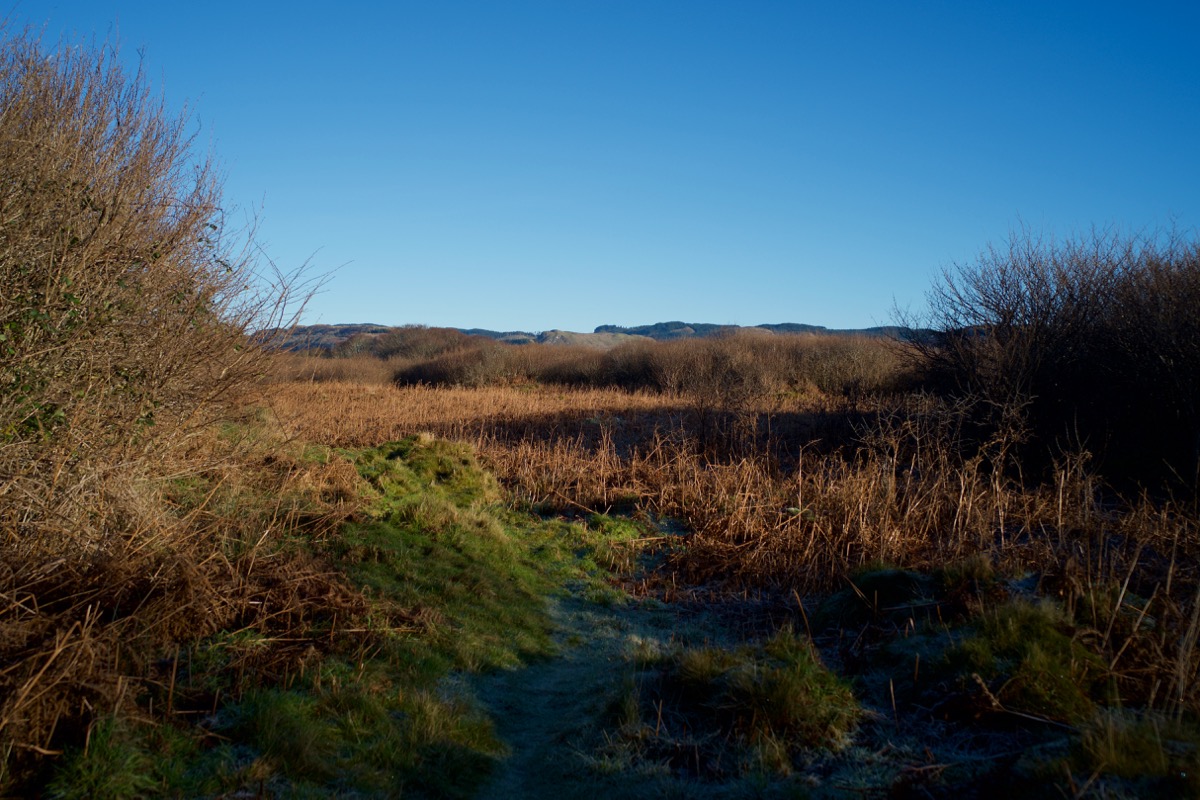
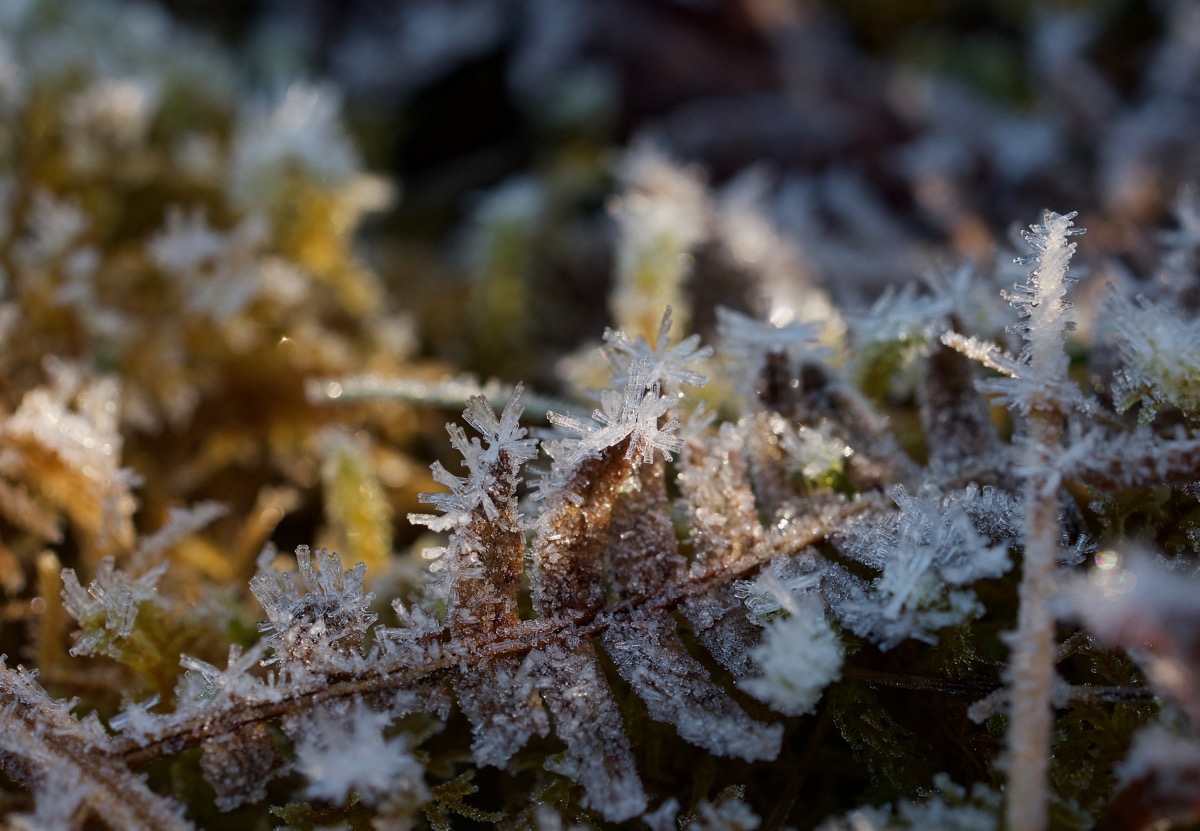
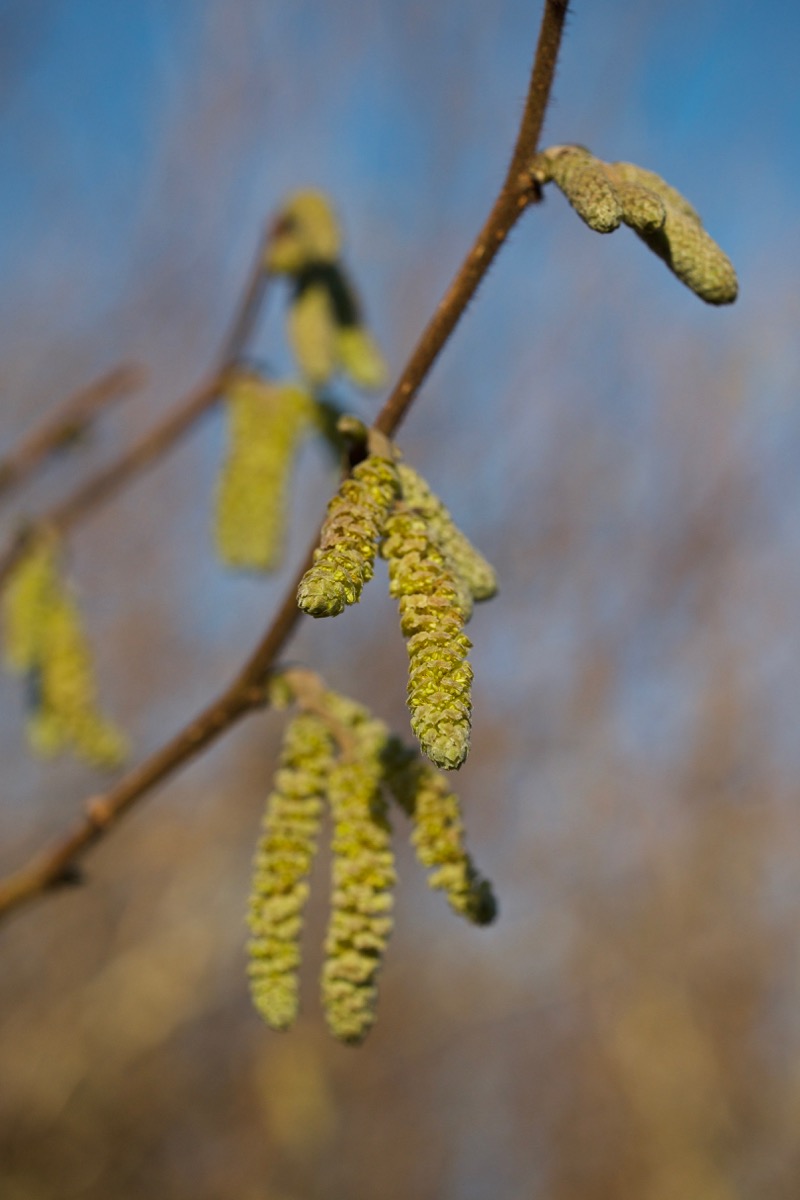
From the open hill, we could hear geese calling as they moved around the fields, and jays were squawking somewhere close by. But once we’d stepped back into the greenish twilight of the hazel wood, it seemed as if everything was still asleep. Our footsteps fell softly on the frosted leaf litter. Nothing moved. There was no birdsong. When we stopped and listened, I felt as if I could hear the trees dreaming.
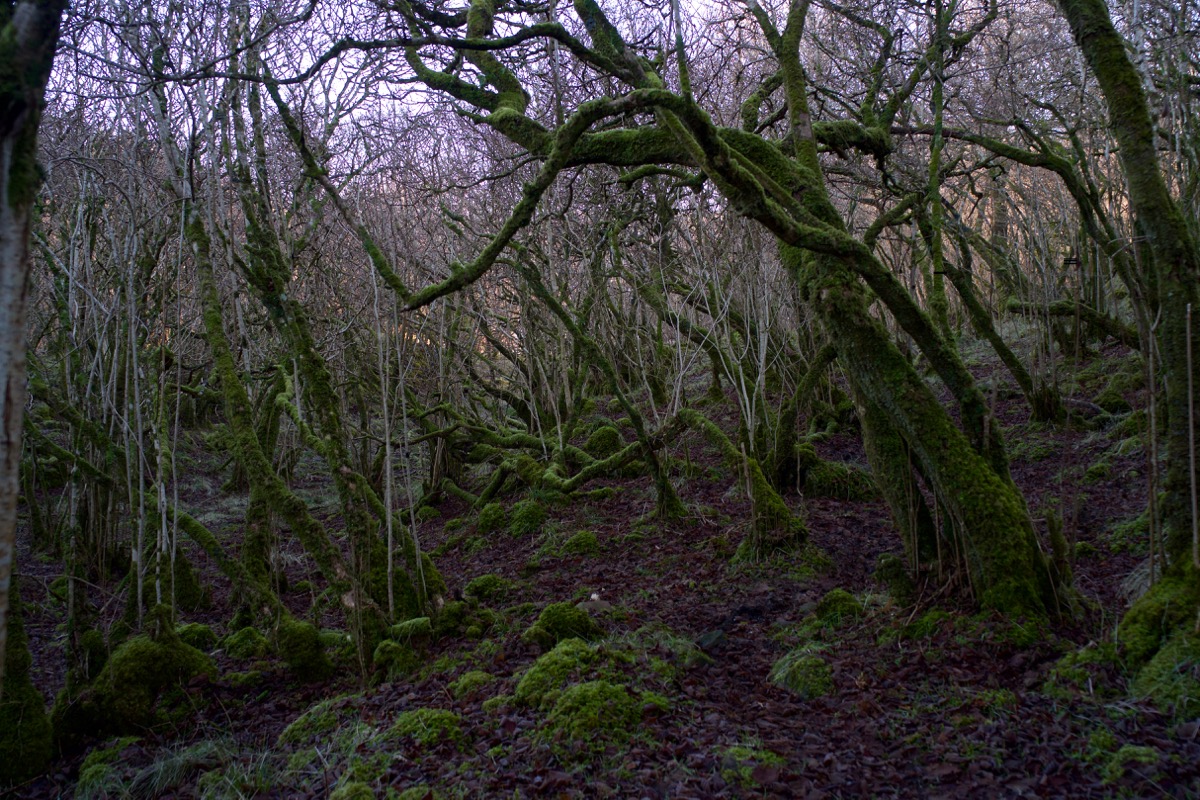
Here and there, a piece of broken branch was suspended, as if by magic, against another – fixed there by glue fungus (Hymenochaete corrugata) which is common in hazel woods. Why should we be surprised that hazels, trees of witchcraft and divination, can hold objects in mid-air? Perhaps they can arrest time, too. On the pale bark of the younger stems – slender and straight as spears – lichens have drawn maps and contours, but left no key.
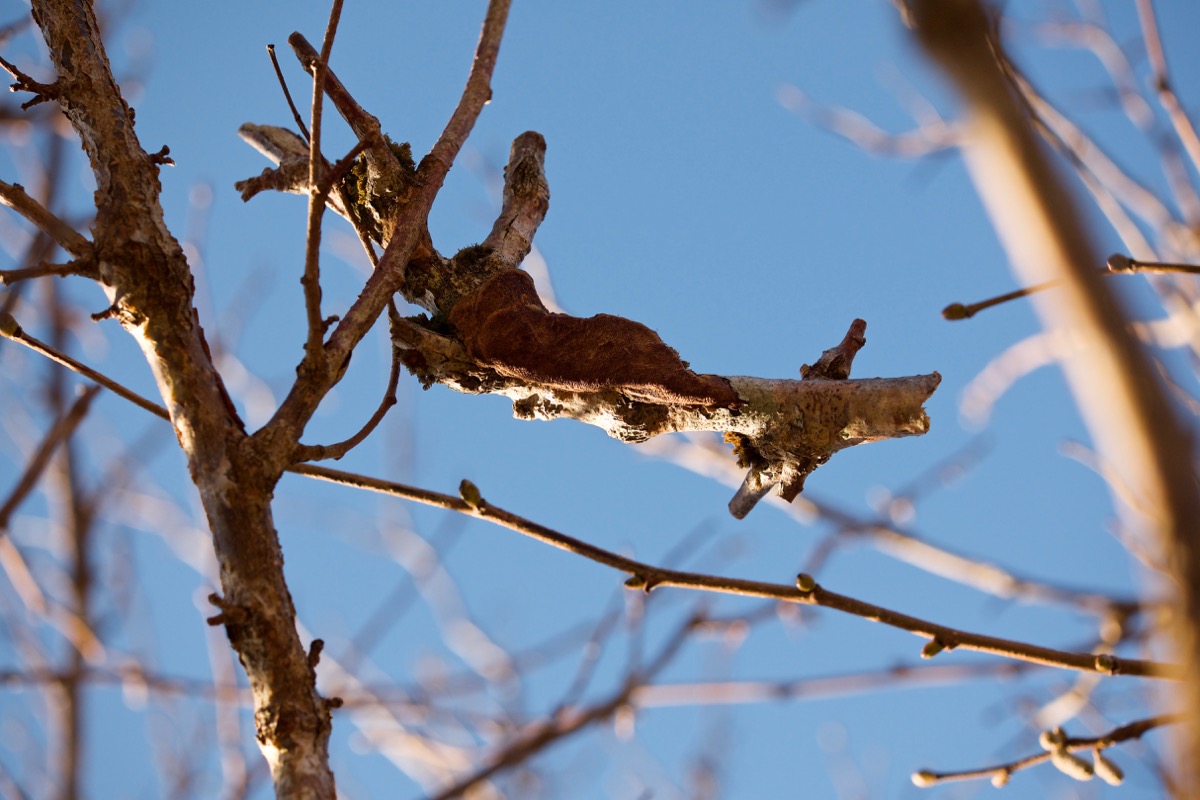
Above: Glue fungus in action; below: lichens on hazel stem
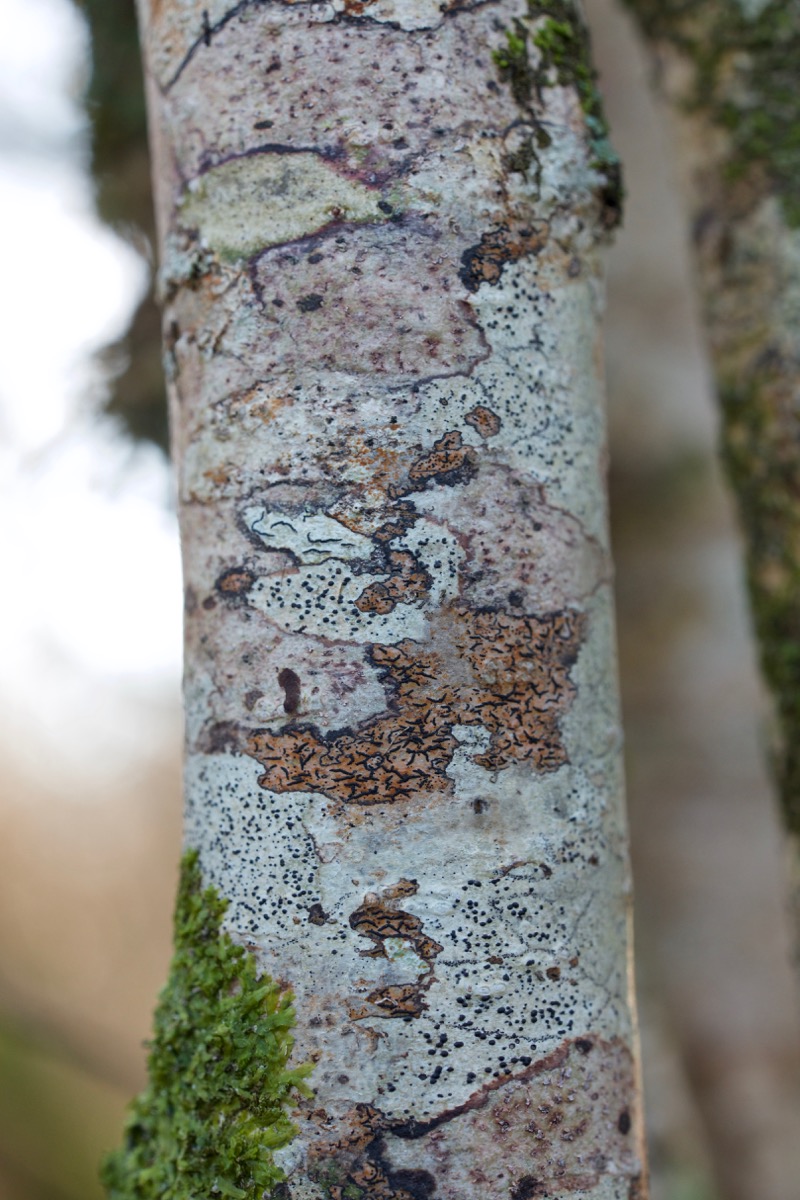
Towards the eastern side, some massively tall beech trees stand like giants amid the ‘hobbit’ hazels, which give them a wide berth. Here, the wood slopes down towards Seil Sound, a narrow neck of sea that separates the island from the mainland. The little inlets of the shore, hard to get to from above, will be the haunt of otters. Behind a screen of branches, we watched a heron fishing from an ‘island’ not much bigger than himself.
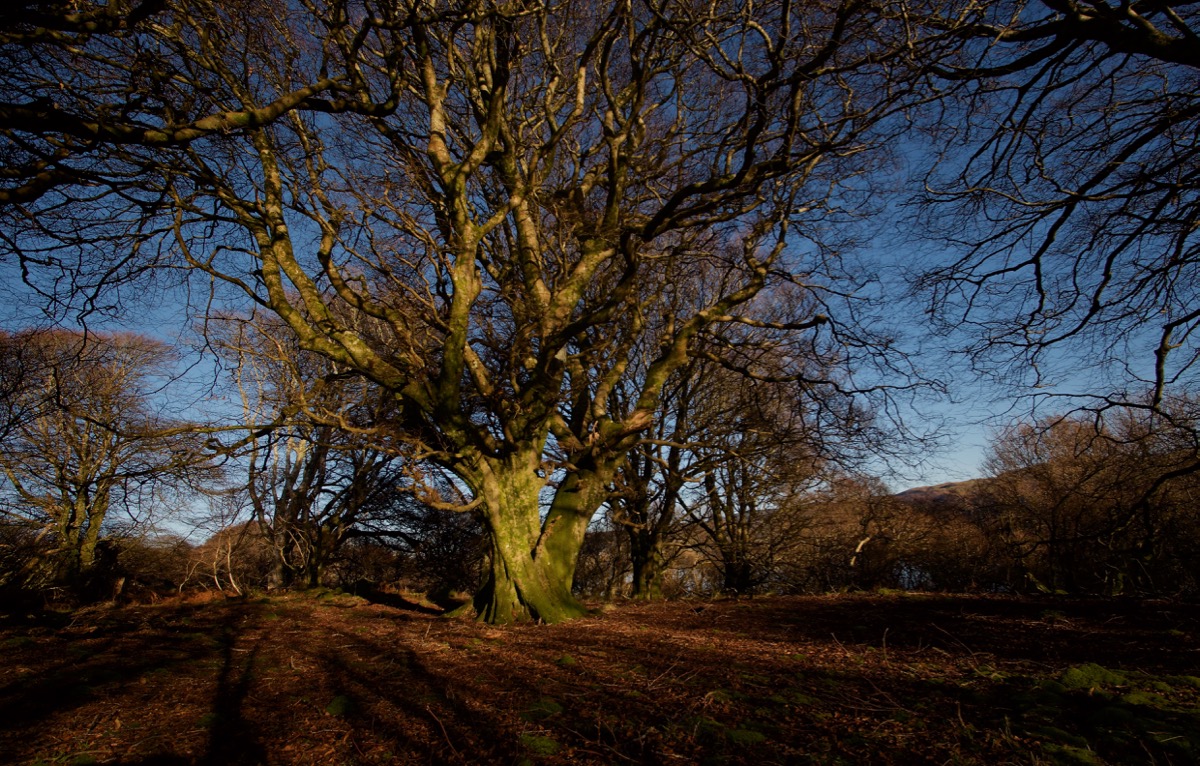
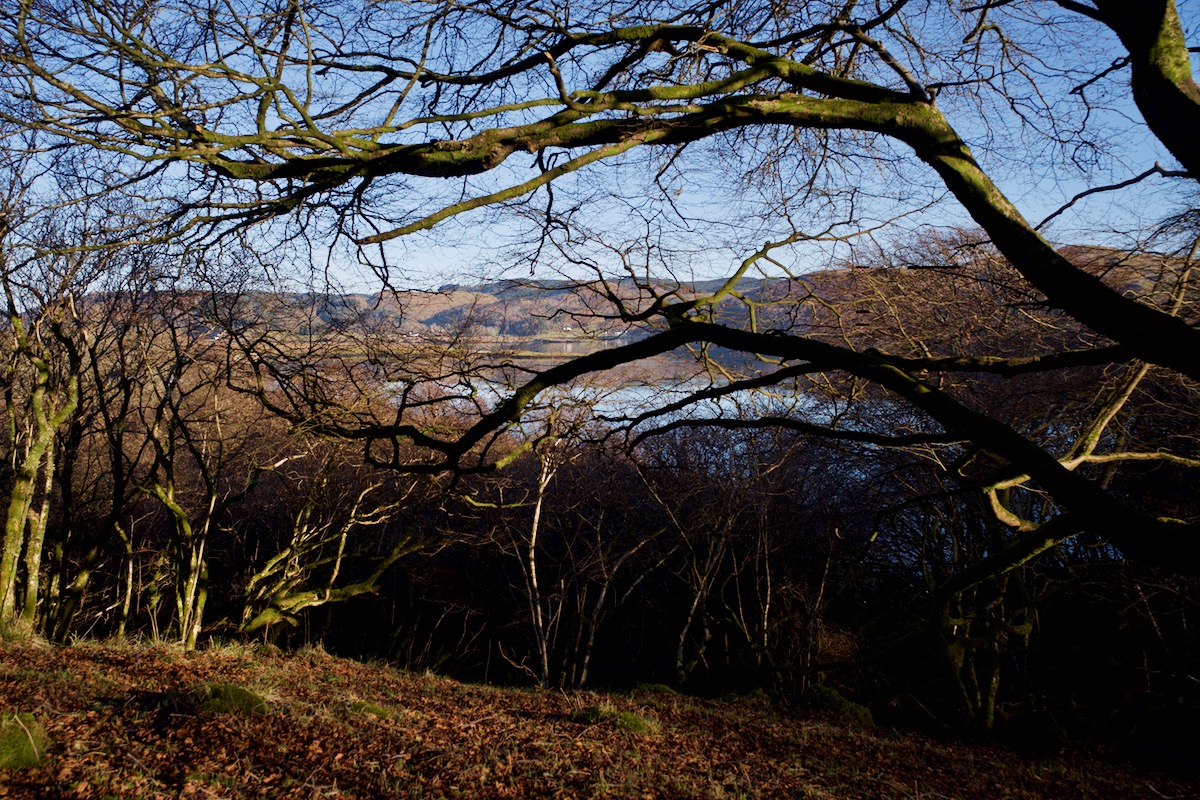
We turned and retraced our steps. The sun was already heading south, but the days are now perceptibly longer. As we came out of the wood, a single chaffinch was singing.
–
More information: Scottish Wildlife Trust
Photos © Colin & Jo Woolf



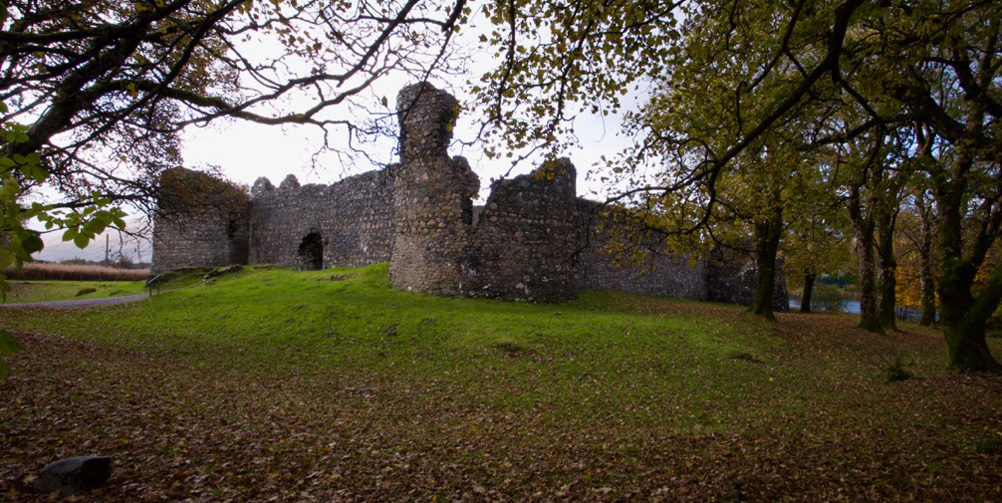
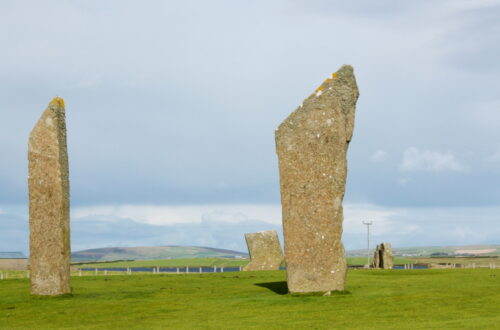
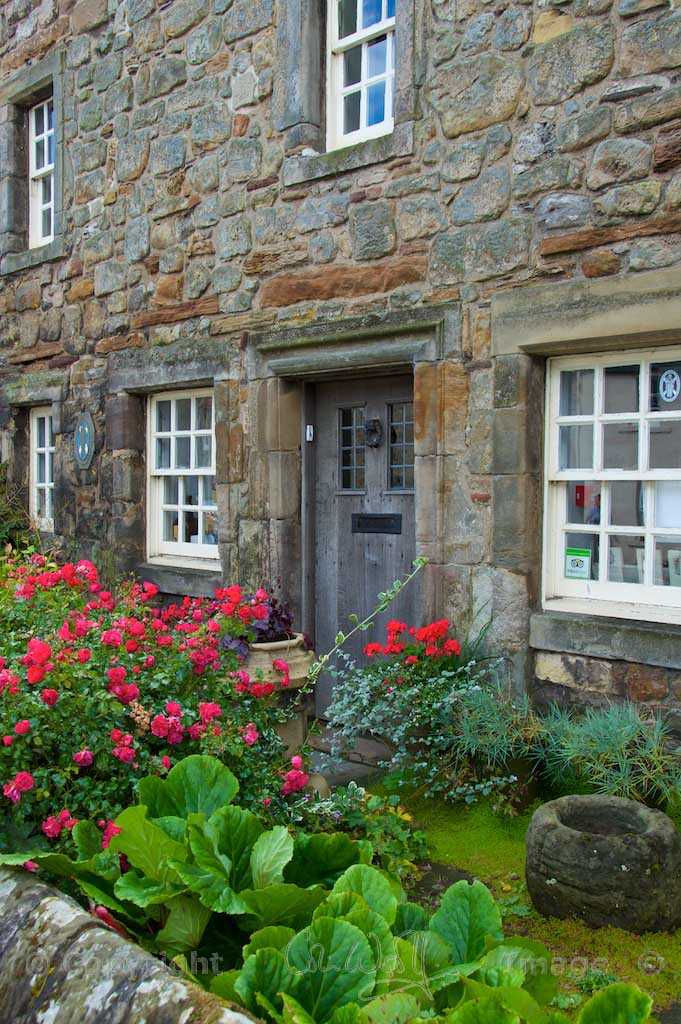
13 Comments
Albie Boakes
Thank you once more . Your descriptions take us on a journey beyond our reach .
Jo Woolf
That’s lovely, Albie, thank you for your comment! Ballachuan is one of my favourite places.
ELAINE
Thank you ! Another trip on the cards …..your writing is fabulous I have shared it already
Jo Woolf
Thank you so much, Elaine, and for sharing! Great that you’re planning a trip – I hope you can visit Ballachuan, it’s a wonderful place!
Janice Boyes
At my age and with my Health, I am unlikely to ever get back to Scotland in person after our brief visit in 1988, but I visit it often in your lovely posts. I just went out to see how the hazel in the corner of our garden is doing. It seems to be at the same stage as the Hazels you write of. Lots of catkins but all still clenched tight. There was a frost this morning but that has gone now, 2pm.
Thank you for providing a lovely picture of the Land, and your histories are wonderful too.
Jo Woolf
Thank you for your kind comments, Janice, so good to know that you enjoy these posts! It’s really nice to have hazels around at this time of year, when not much else is stirring – you can look at them and know that the seasons are turning and the earth is waking up.
Bob Hay
Loved the story Jo. Looks like real primeval woods. I always thought catkins were like little balls of cotton wool coming out of the branches. As kids we used to go to Cathkin Braes near Glasgow to roll Easter eggs and collect little branches of what we called catkins. I don’t recall seeing those dangling ones.
Jo Woolf
Thank you, Bob! Yes, there’s a real ‘elemental’ feel about Ballachuan, so deep and peaceful. Those catkins you saw as a kid sound like willow catkins – there are many different species of willow, and they all put out those little cotton-wool balls, some bigger than others. We saw some the other day, very tiny. The goat willow is one of the best for ‘pussy willow’ type catkins https://www.woodlandtrust.org.uk/trees-woods-and-wildlife/british-trees/a-z-of-british-trees/goat-willow/
Bob Hay
Yep, that was it Jo, pussy willows👍
Finola
What a lovely, evocative post. I think you might be ahead of us now – ireland has been so cold this winter.
Jo Woolf
Thank you, Finola, that’s very kind! Interesting to hear we might be ahead of you – do you have any snowdrops out yet? We saw the first ones around 15th, still very much in bud. It’s certainly been a much colder winter than last year – but thankfully less wet!
Dominique Anfossi
I came late to this post but so glad I didn’t miss it. You write in such beautiful evocative language I could feel myself transported. I have walked in winter through the hazel woods around the East Lyn river in Exmoor national park and like you found the atmosphere of time suspended. I love the image of the trees dreaming. Thank you for sharing this.
Jo Woolf
Thank you so much, Dominique! I’m really glad you enjoyed it. I’ve read about the hazel woods on Exmoor and they sound incredible. I’m really glad these precious remnants still survive!